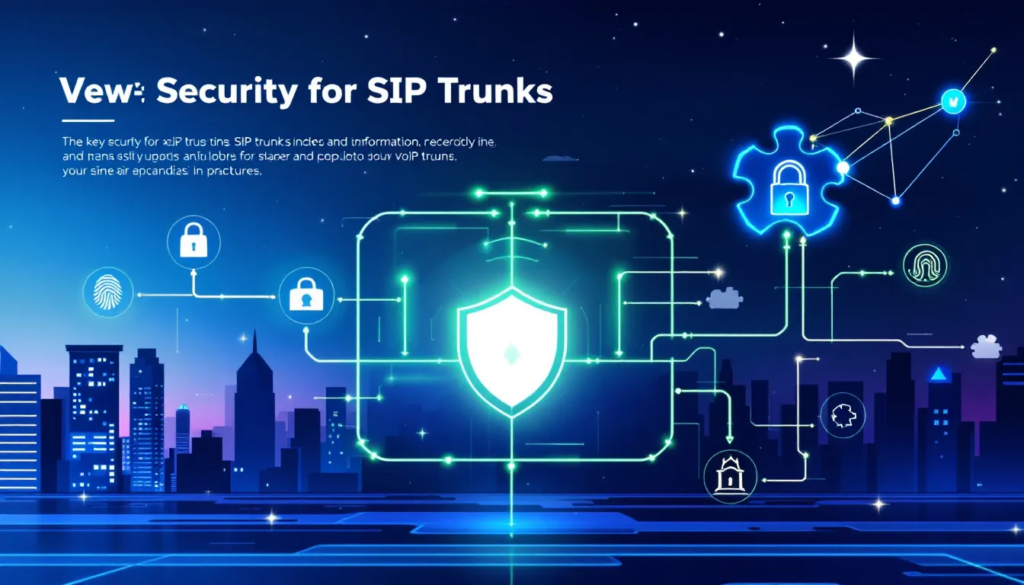
Top Strategies to Secure SIP Trunk for Reliable Communications
If you’re looking to secure your SIP trunk, this article is for you. We’ll cover essential strategies to protect your business communications from cyber threats, ensuring your secure SIP trunk is both safe and reliable.
Key Takeaways
Implementing robust security measures for SIP trunks is essential to protect against various cyber threats and maintain communication integrity.
Key strategies include utilizing encryption (TLS and SRTP), Session Border Controllers (SBCs), and regular monitoring to enhance SIP trunk security.
Partnership with reputable SIP trunking providers that prioritize security can significantly mitigate risks and enhance the reliability of communication systems.
Top Strategies to Secure SIP Trunk for Reliable Communications
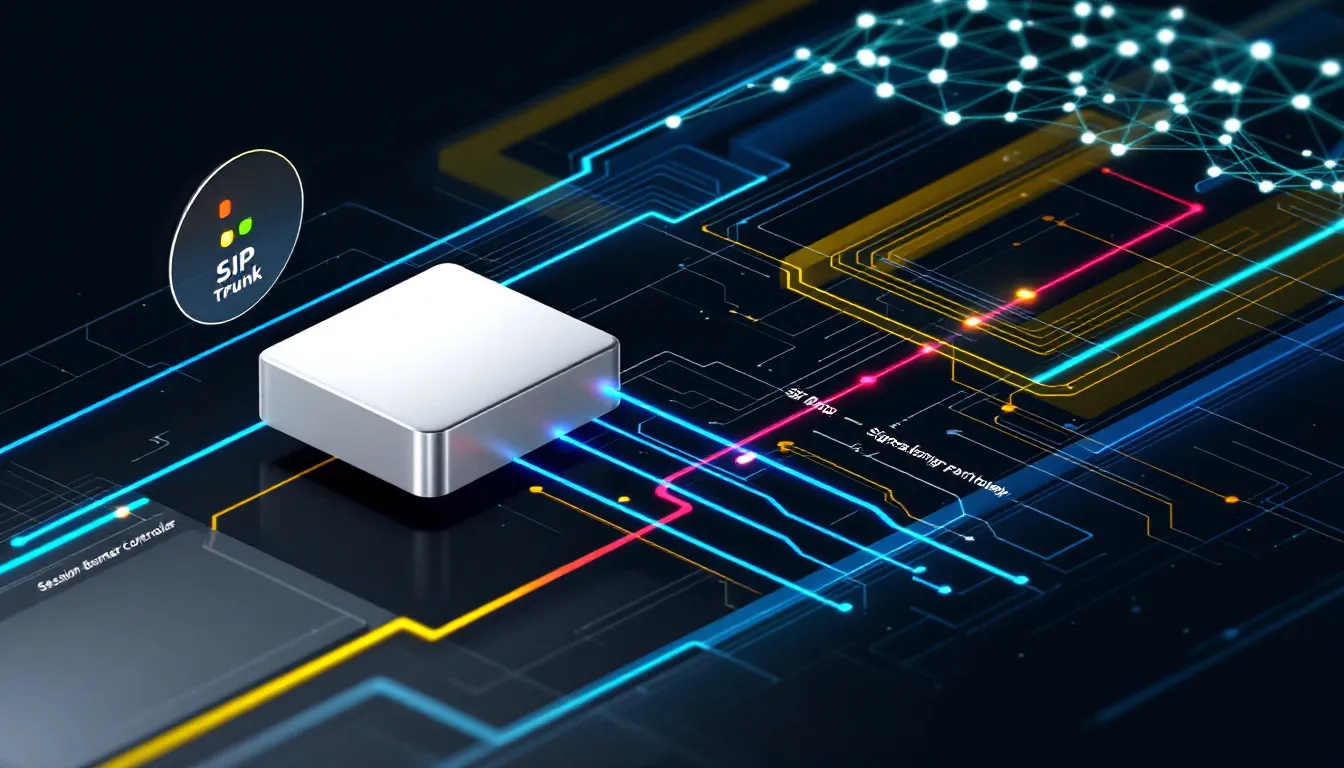
Implementing secure SIP trunking is essential, transcending a mere technical requirement to become a vital strategic consideration. Given that SIP trunks are susceptible to numerous cybersecurity risks, establishing a robust security infrastructure for these technologies is paramount. As organizations strive to safeguard their communications data from breaches, there’s an increasing need for secure sip trunking services. Failing to enforce such protective measures may jeopardize the dependability and safety of your telephony system, potentially incurring financial losses and tarnishing your reputation.
Incorporating elastic SIP trunks capitalizes on cloud capabilities that enhance flexibility and consistency in communication frameworks. This dynamic solution augments scalable voice communications while amalgamating them seamlessly with existing data networks—offering fortified security features like encryption as part of this versatile approach—which makes it especially appealing for companies looking to update their communication infrastructures.
The surge in VoIP technology adoption within business processes underscores the necessity for secure sip trunking services capable of handling diverse forms of information transfer securely. By prioritizing safe trunking protocols, businesses can effectively shield their operations and ensure trustworthy digital interactions—an indispensable strategy amidst today’s technologically driven commercial landscape.
Introduction
Maintaining the integrity of SIP trunking is crucial for secure and effective communication. As businesses face an increasing number of cyber threats, it’s imperative to proactively safeguard their communication infrastructure. While SIP trunks offer significant advantages over traditional phone lines in modernizing communications, they can also become vulnerable if not properly secured.
To ensure that sensitive data remains protected and that communications are uninterrupted, implementing strong security measures is essential. Given that SIP trunking facilitates the conveyance of voice calls as well as video and image transmissions via the internet, its multifunctionality unfortunately makes it a target for malicious actors. By adopting thorough security practices, companies can defend their communication operations against such incursions.
The focus of this blog post is on revealing principal methodologies for bolstering the security around SIP trunks with tactics ranging from fundamental to sophisticated levels. A deeper understanding and implementation of these methods will substantially enhance overall SIP trunking security thereby ensuring resiliently secure connections throughout your organization’s networked systems. Explore ways to fortify your firm’s defenses surrounding its communication frameworks herein.
Understanding SIP Trunking Security
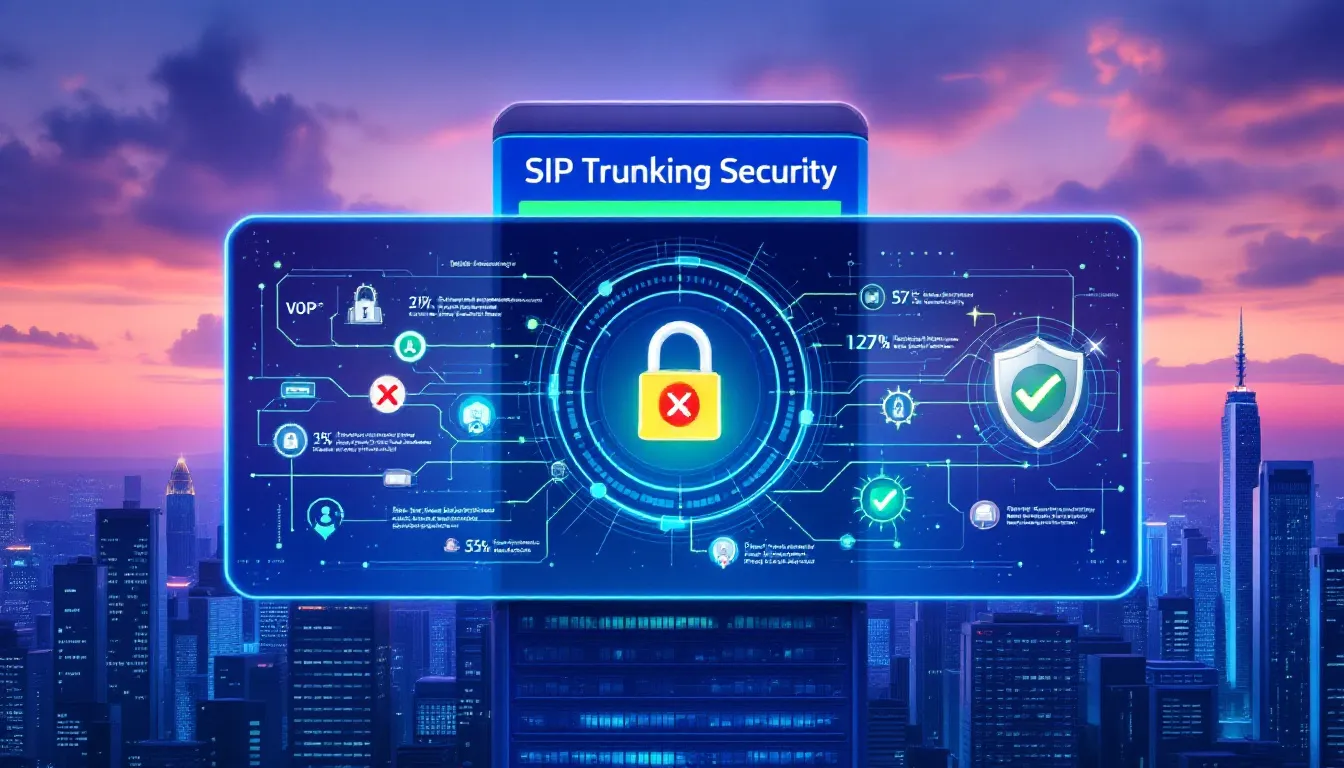
The incorporation of SIP trunking within corporate frameworks has elevated the imperative for secure communications. Through SIP trunking, an array of data types such as voice, images, and video can be transmitted over the internet, supplanting conventional telephony services with VoIP solutions. This advancement bolsters the versatility and productivity of communication systems. In absence of adequate security protocols, SIP technology could be susceptible to cyber risks. Formulating a holistic approach to safeguard these communications is essential.
Comprehending both the mechanics of SIP trunking and its significance in terms of security is vital. The ensuing segments delve into these subjects extensively to provide a robust platform from which effective safety measures may be established.
What is SIP Trunking?
SIP trunking utilizes a protocol that enables businesses to manage their phone system through the internet rather than using old-fashioned landline connections. It serves as a connector between VoIP systems and the conventional PSTN, facilitating voice calls over the internet. SIP trunking propels communication into greater realms of flexibility and efficiency by substituting traditional telephony services with VoIP while leveraging existing Wi-Fi networks for an economical alternative.
The primary goal of SIP trunking is to shift an established PBX phone system onto cloud-based solutions, thereby increasing its adaptability and capacity for growth. This technology allows for seamless transmission of not just voice but also images and videos, making it a robust medium for diverse communications. Within this context, VoIP represents the mode of transport, while SIP embodies the pathway they travel on—highlighting how critical each element is to the other’s functionality.
Grasping what SIP trunking entails lays down crucial groundwork toward implementing strong security practices aimed at safeguarding these communication infrastructures from various threats.
Why Security Matters in SIP Trunking
The importance of security in SIP (Session Initiation Protocol) trunking cannot be overstated, as it is vital to thwart cyber-attacks that could lead to substantial financial losses. An attack targeting unprotected SIP trunking systems can quickly escalate into a costly ordeal, with potential damages reaching into the thousands.
It is imperative for organizations to safeguard their SIP trunking service by enacting strong security protocols. By doing so, they shield their communication infrastructure from online threats and maintain dependable communications channels. Recognizing the dangers associated with vulnerable SIP trunking services serves as an initial phase towards crafting an effective strategy for securing these essential business functions.
Key Security Measures for SIP Trunks
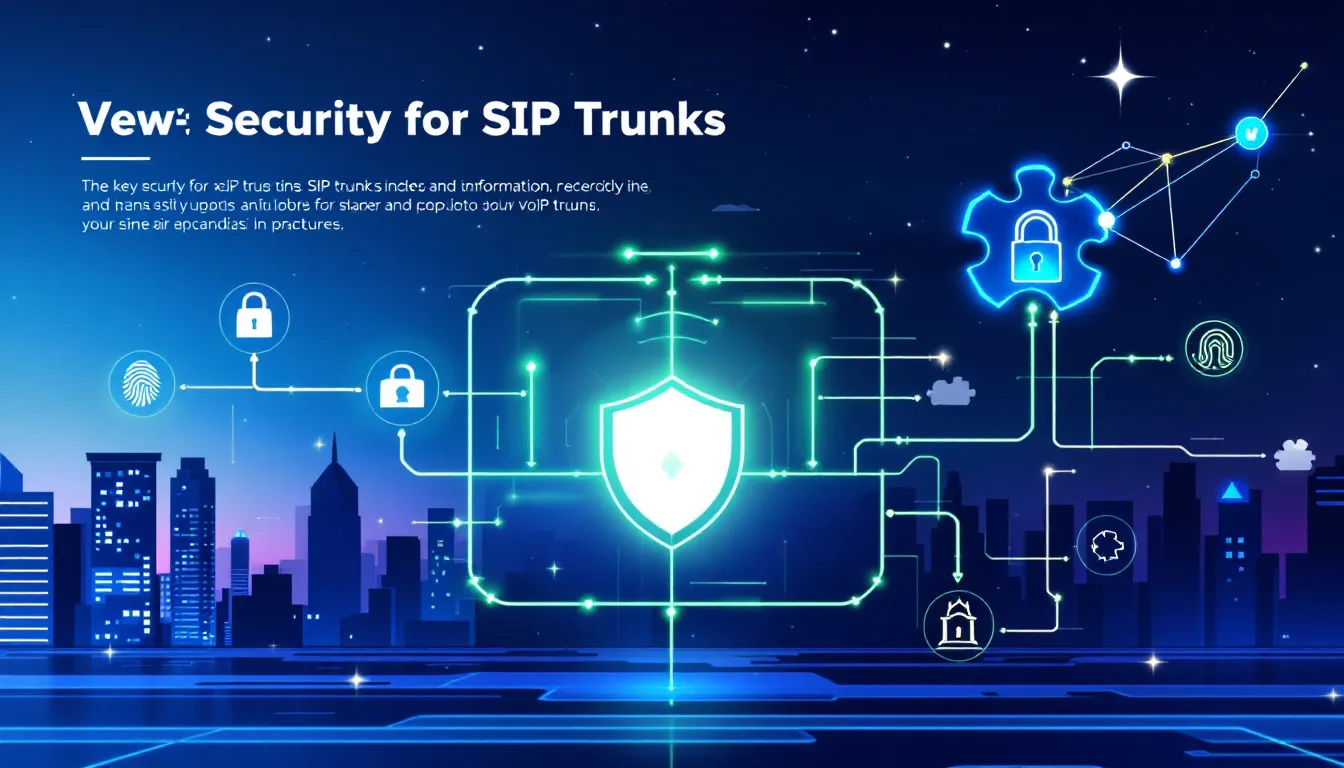
It is essential to adopt critical security protocols for SIP trunks to safeguard against unauthorized access and guarantee secure communications. Utilizing encryption mechanisms like the Secure Real-time Protocol (SRTP) shields media streams and SIP signaling, while Transport Layer Security (TLS) bolsters the security of SIP signaling. Constraining device access minimizes vulnerabilities that attackers could exploit. Selecting a SIP provider with a strong focus on rigorous security practices and adherence to standards will strengthen the protection of your communication systems.
Subsequent segments delve into various protective strategies such as TLS, Session Border Controllers (SBCs), and SRTP, providing actionable guidance on how they can be implemented effectively.
Implementing Transport Layer Security (TLS)
Transport Layer Security (TLS) maintains the confidentiality of session initiation protocol signaling by encrypting data transmitted over the internet. TLS ensures the privacy of SIP signaling, protecting communications from unauthorized access. Leading SIP trunking providers commonly use encryption protocols like TLS for signaling and SRTP for media to secure communications.
Configuring TLS for secure SIP trunks starts with generating an RSA key, ensuring proper encryption and secure communication. SIP TLS traffic uses TCP port 5061, ensuring secure data transmission.
Using TLS and SRTP together ensures the privacy and integrity of communications during transmission.
Utilizing Session Border Controllers (SBCs)
Session Border Controllers (SBCs) serve as defensive barriers, safeguarding the network against cyber threats and securing the pathways used for calls within SIP trunking. These devices are typically installed at an organization’s network perimeter and at boundary points with service providers, reinforcing call security through managing voice communications, deploying firewalls, and obstructing unauthorized entry.
Incorporating SBCs bolsters the defense of SIP trunking services from emerging dangers. By adding this extra layer of protection through SBCs, it becomes more challenging for assailants to penetrate the network and disrupt communication systems.
Enabling Secure Real-Time Transport Protocol (SRTP)
Utilizing Secure Real-Time Transport Protocol (SRTP) is essential for safeguarding the confidentiality and integrity of voice communication data as it transmits. SRTP employs TLS to secure media streams, creating an encrypted channel specifically suited for protecting voice communications against interception and unauthorized access, thereby maintaining the privacy of sensitive information.
To leverage this security measure, one must configure their SIP trunking service to utilize encrypted media streams. By doing so, all voice data communicated via SIP trunking remains secure—a critical step in preserving both the integrity and confidentiality of such communications within our increasingly digital landscape.
Advanced Techniques for Enhanced SIP Trunking Security
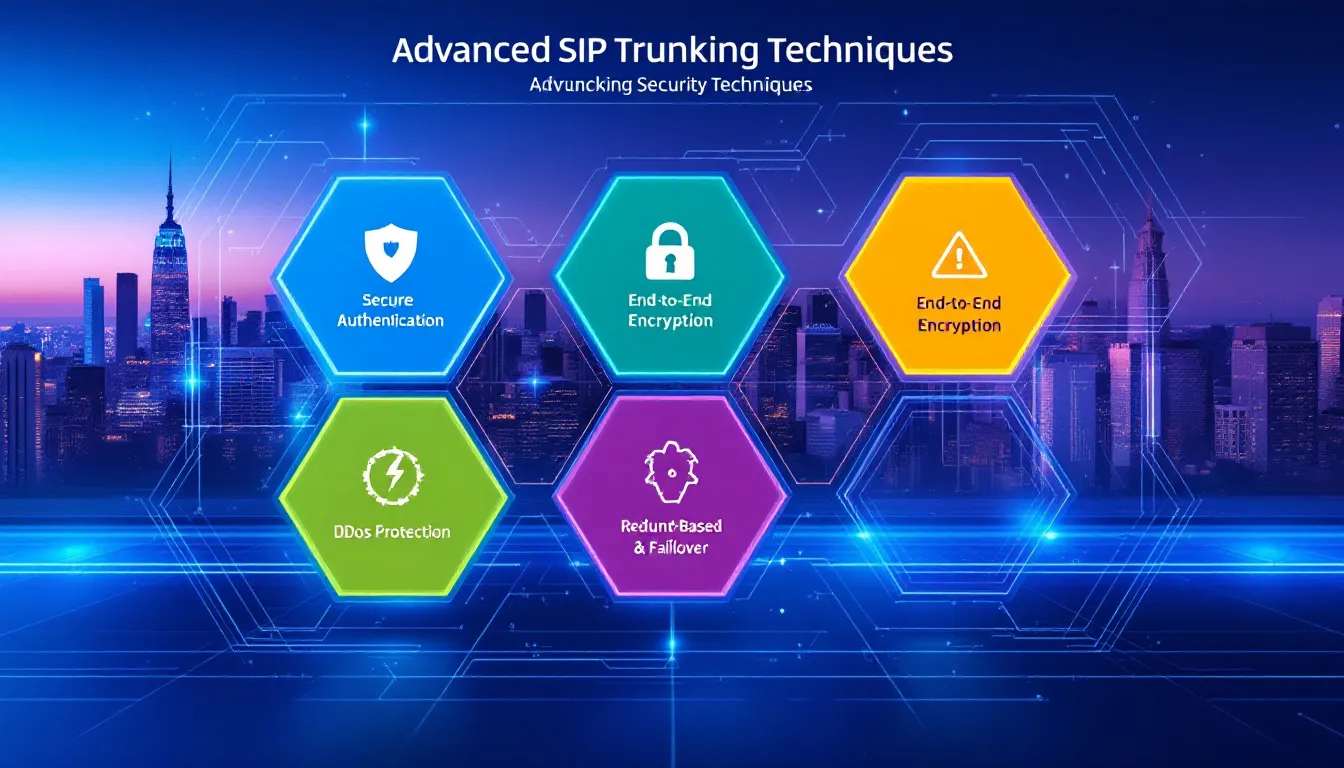
Implementing sophisticated strategies on top of essential security protocols significantly strengthens the defense of SIP trunking systems. Encrypting voice data through SRTP, employing TLS to safeguard SIP signaling, and utilizing dynamic approaches such as elastic SIP Trunking that adjust resources flexibly are part of these advanced techniques. It is also imperative to engage in vigilant monitoring and thorough auditing to identify any signs of security compromises within the architecture.
Subsequent discussions delve into more intricate methods for reinforcing trunking security including Restrictive Device Access Management, Network Concealment with Privacy Measures, along with Consistent Surveillance and Firmware Enhancements. These tactics provide a framework for enhancing the resilience of a sip trunk against various threats.
Limiting Device Access
By restricting network access solely to authorized devices, the threat of unsanctioned entry into SIP trunking services is substantially reduced. The security of SIP trunking is greatly reinforced through restricting device permissions.
Implementing extra firewalls and robust security protocols elevates safeguard measures, thus guaranteeing that only sanctioned devices have access capabilities to the trunking network.
Network Masking and Privacy Controls
Employing network masking strategies is crucial to thwart potential attackers from compromising your SIP trunk. By obscuring the network, it becomes more challenging for intruders to identify and attack, thereby bolstering security.
Modifying privacy configurations is imperative in protecting sensitive data against threats both within and outside the organization. This guarantees that such information maintains its secrecy and confidentiality.
Regular Monitoring and Updates
Regular monitoring of network traffic is essential to prevent breaches caused by spoofing attacks. Continuous monitoring allows businesses to detect potential threats and take proactive measures. Regular updates and patches are crucial to address vulnerabilities and enhance SIP trunking security.
Proactive monitoring and timely updates maintain the highest security quality, protecting communications from evolving cyber threats. Regular audits and updates help identify and address vulnerabilities, ensuring SIP trunking services remain secure and reliable.
Common Security Risks in SIP Trunking
Failing to secure SIP trunking can result in substantial monetary damages stemming from cyber-attacks. Vulnerabilities in unprotected SIP trunks make organizations susceptible to dangers such as interception of communications, unauthorized access to data, and disruptions caused by denial-of-service attacks. Keeping software current through prompt updates is essential for closing security gaps and safeguarding against toll fraud. Conducting regular security audits is also imperative for detecting weak spots and upholding established security protocols.
Subsequent sections delve into particular threats related to SIP trunking—namely Spoofing Attacks, Toll Fraud, and Denial of Service (DoS) Attacks—and discuss methods for thwarting prevention effectively.
Spoofing Attacks
Spoofing attacks pose a major risk in SIP trunking by enabling unauthorized access or causing service disruption. These attacks involve forged VLAN tags, manipulating network operations by altering the VLAN tag in data packets. This allows attackers to impersonate legitimate callers, leading to data leaks or network compromise. Caller ID spoofing is a common technique where fraudsters impersonate legitimate callers, making it difficult to identify threats.
Monitoring network traffic is critical for detecting and preventing breaches related to spoofing attacks. Robust monitoring tools and practices help businesses identify spoofing attempts and take immediate action to mitigate risks.
Ensuring that security protocols are up-to-date and effective is essential for protecting against such attacks.
Toll Fraud
Toll fraud is a persistent issue, characterized by unauthorized individuals tapping into network resources to place expensive long-distance calls. This activity involves unapproved access and utilization of network capabilities specifically for making these costly calls.
Wangiri fraud represents another variant of toll fraud where victims are lured into calling back premium rate numbers, leading to unwanted charges on their accounts. To combat this type of exploitation effectively, robust authentication protocols should be put in place alongside vigilant monitoring of call patterns. Such preventative strategies are essential to safeguard businesses against exorbitant expenses and prevent the overloading of network traffic due to toll fraud activities.
Denial of Service (DoS) Attacks
Denial of Service (DoS) attacks can overwhelm SIP trunks with excessive traffic, leading to service outages and disruptions. These attacks target SIP trunks on IP networks, flooding them with traffic to cause service disruptions. Such attacks can significantly impact the reliability of communication services, causing financial losses and operational inefficiencies.
Organizations need to implement protective strategies to mitigate the risk of DoS attacks affecting SIP trunk services. This includes deploying robust firewalls, utilizing SBCs, and continuously monitoring network traffic to detect and respond to incoming threats.
By taking proactive measures, businesses can ensure that their SIP trunking services remain reliable and secure.
Best Practices for Maintaining Secure SIP Trunks
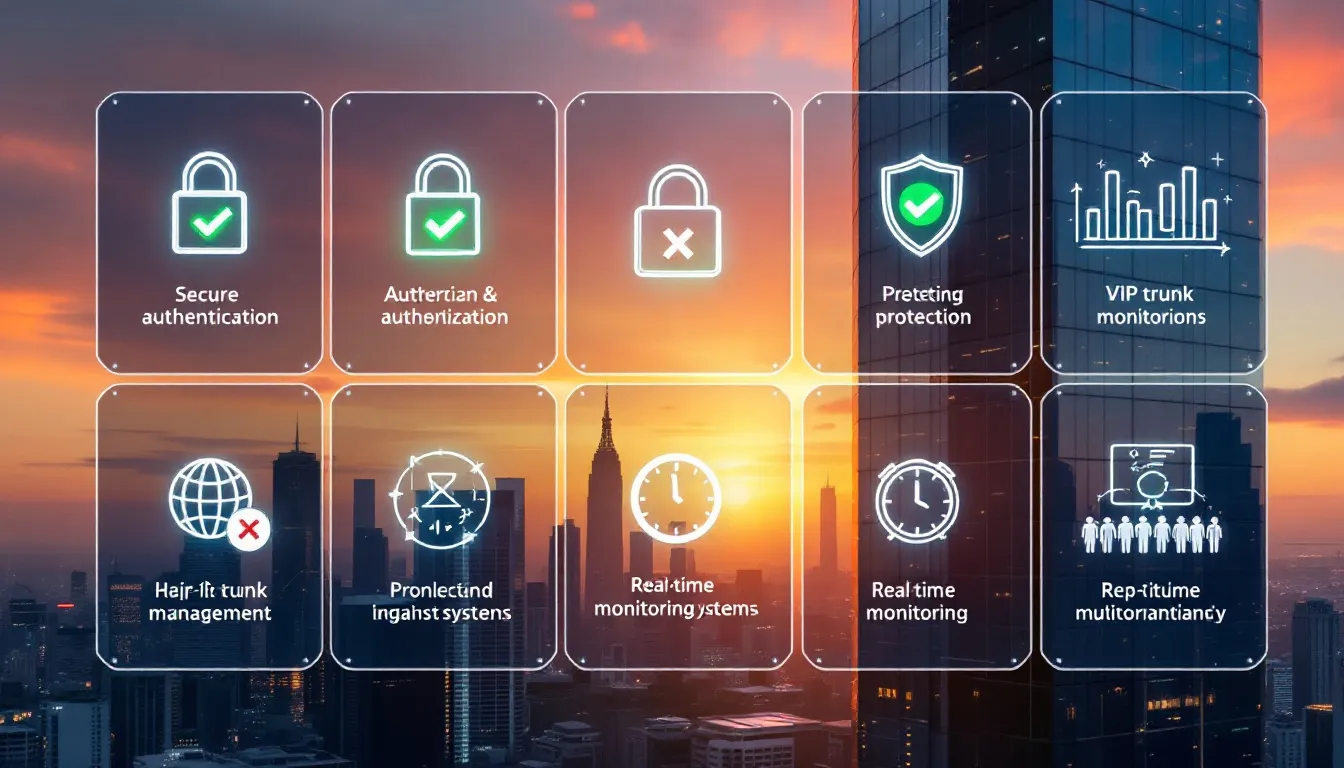
Ensuring the security of SIP trunking demands persistent attention and compliance with recommended practices. This involves keeping software current, enforcing robust passwords, and regularly revising security measures to guard against new vulnerabilities. Telecom teams that have adeptly set up secure SIP systems stress the necessity for joint training sessions with network experts. The continuous acquisition of knowledge and skills by telecom engineers is vital in reducing security threats and preserving secure trunking.
Subsequent segments will delve into optimal strategies like Conducting Frequent Security Assessments, Educating Employees on Safety Protocols, and Engaging Reputable Providers of SIP Trunks—all aimed at providing practical guidance for sustained management of security.
Regular Security Audits
Ensuring the security of SIP trunking services necessitates continuous audits to safeguard against new and evolving threats. These assessments are critical for revealing potential weaknesses that attackers might exploit, guaranteeing adherence to security protocols, and minimizing the likelihood of data compromises. Within the realm of SIP trunking, typical security hazards include impersonation through spoofing attacks, unauthorized usage resulting in toll fraud, and disruptions caused by denial-of-service (DoS) incursions.
By implementing frequent evaluations businesses can maintain a high level of security around their SIP trunk service while adhering strictly to sector regulations. This preventive strategy is vital for detecting any frailties within their systems’ defenses and confirming that robust safeguards are established to shield them from prospective dangers.
Employee Training and Awareness
Educating staff on the importance of adhering to security procedures is crucial for diminishing the likelihood of risks associated with human mistakes and internal threats. Continuous instruction in secure practices plays a significant role in lessening the chances of human errors, which may result in breaches.
Instilling a sense of responsibility towards security measures within employees helps establish an environment where awareness and alertness regarding security are ingrained values. This ongoing process contributes significantly to plugging gaps that might occur due to human vulnerabilities.
Collaborating with Trusted SIP Trunking Providers
Teaming up with a respected SIP trunking provider guarantees secure and reliable communication offerings. These providers adhere to robust security protocols and conform to sector-wide standards, thereby boosting the protection level of your communications infrastructure.
Working alongside seasoned experts in SIP trunking allows companies to access cutting-edge security capabilities and valuable know-how, safeguarding their communication networks from possible vulnerabilities effectively.
How Leading Providers Ensure SIP Trunking Security
Top providers of SIP trunking services prioritize delivering secure and dependable solutions that shield companies from cyber dangers. Ensuring security is critical in the realm of SIP trunking as a means to preserve confidential communications against numerous online threats. To defend against unauthorized entry, these suppliers employ an array of protective strategies such as encryption methods, authentication measures, and defenses against Distributed Denial-of-Service (DDoS) attacks. Such precautions are designed to allow access solely for authenticated users, thereby defending the integrity of their communications.
Subsequent sections will delve into Security Features provided by these Providers along with examining Case Studies illustrating Secure Implementations. This information offers a glimpse into established industry standards for security practices alongside concrete examples drawn from actual deployments within the field.
Provider Security Features
SIP trunking services employ encryption methods to defend communications against illicit access. To Secure SIP trunks, providers incorporate authentication protocols that confirm the identity of users before granting them service access. Top-tier providers bolster their defenses with DDoS protection strategies to shield their SIP infrastructure from coordinated disruption attempts. Through these integrated security features, providers aim to maintain highly secure and reliable communication channels.
Premier suppliers of SIP trunking solutions prioritize a robust suite of security measures designed to ensure the integrity and confidentiality of communications while thwarting unauthorized entries. With technologies like encryption and authentication in place, they fortify communications against potential hazards. Businesses that opt for such dedicated providers can substantially improve the overall safety posture of their communication networks by selecting those who put an emphasis on high-level security practices for safeguarding both data flow and access points within SIP trunk implementations.
Case Studies of Secure Implementations
Incorporating secure trunking solutions, organizations significantly lower their exposure to prevalent cyber threats. It is imperative for these entities to utilize security measures within SIP trunking in order to bolster their defense mechanisms against such risks. Evidenced by case studies, it’s clear that the likelihood of incidents like spoofing and toll fraud diminishes with the application of secured implementations in SIP trunking strategies. Through adopting stringent security protocols, businesses can elevate the protection level of their communications systems and minimize incidences of deceptive practices, ensuring consistent and safeguarded interactions.
Thanks to secure implementation techniques, businesses witness heightened communication safety alongside a decline in fraud occurrences. These illustrative case studies underscore the necessity for securing trunking methodologies as well as their significant contribution towards ameliorating organizational safeguards. By assimilating lessons from these precedents, companies are better positioned to devise comparable approaches aimed at fortifying their communicational infrastructures against potential compromises.
Summary
Securing Session Initiation Protocol (SIP) trunks is a critical step to ensure dependable and effective communications in the modern digital landscape. Recognizing the fundamental aspects of SIP trunking and its importance for secure operations enables companies to implement preventive actions that safeguard their communication infrastructures. By incorporating essential security protocols such as Transport Layer Security (TLS), employing session border controllers (SBCs), and utilizing Secure Real-Time Transport Protocol (SRTP), along with adopting more sophisticated methods like restricting device accessibility and concealing network information, businesses can considerably bolster the security surrounding their SIP trunking.
To maintain robust protection against new cyber threats, it’s important to carry out continuous monitoring, perform regular updates, and conduct thorough security audits. Educating employees about best practices in securing SIP trunks creates a strong collaboration between organizations and reputable providers specializing in SIP trunk services which solidifies defense mechanisms ensuring systems are shielded from potential attacks.
By following these guidelines for securing communications via SIP trunks, enterprises not only achieve reliable but also secure channels which are vital for preserving confidential information as well as upholding system integrity. While establishing secure sip trunking constitutes an iterative endeavor requiring ongoing vigilance. Equipped with pertinent expertise alongside suitable tools, companies can efficiently defend their communication transactions against vulnerabilities within this domain.
Frequently Asked Questions
What is SIP trunking?
SIP trunking is a technology that enables businesses to use the internet for their phone systems instead of traditional landlines, significantly improving communication flexibility and efficiency.
Why is security important in SIP trunking?
Security is essential in SIP trunking to safeguard against cyber-attacks and financial losses. Unsecured systems can lead to serious risks such as data breaches and denial-of-service attacks.
What are the key security measures for SIP trunks?
To bolster the security of SIP trunks, adopting Transport Layer Security (TLS) is imperative. Along with this, it’s important to make use of Session Border Controllers (SBCs) and activate Secure Real-Time Transport Protocol (SRTP).
Implementing these strategies will greatly strengthen your system’s defenses against possible threats and vulnerabilities.
How can businesses enhance SIP trunking security further?
To enhance SIP trunking security, businesses should implement advanced techniques like limiting device access, employing network masking, and utilizing privacy controls, alongside regular monitoring and updates.
These measures collectively strengthen the overall security framework.
How do leading SIP trunking providers ensure security?
Leading SIP trunking providers ensure security by employing encryption techniques, implementing authentication protocols, and utilizing DDoS protection mechanisms to protect communications from unauthorized access.


